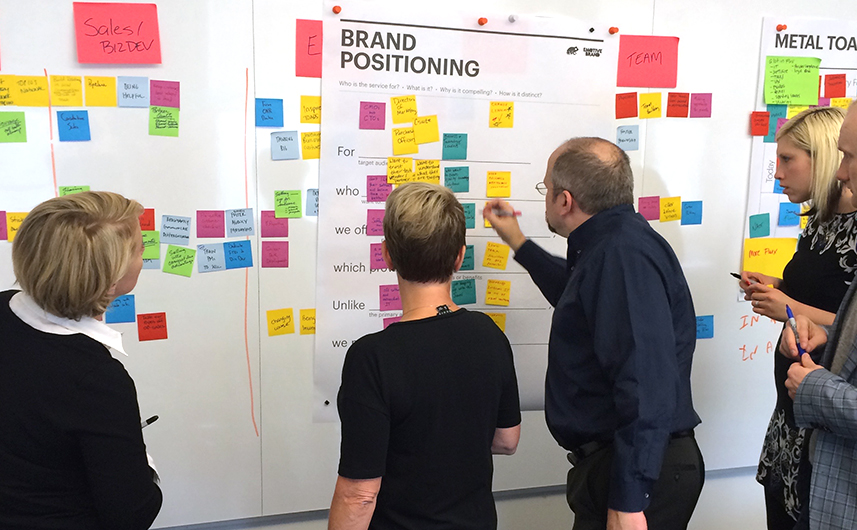High-Tech Companies Have Banished the Word Brand Strategy
I’m not sure when it happened. I only know it has. Brand strategy is no longer something the tech world is asking for. Well, let me be clear, they are still asking for it, they just aren’t using the term brand strategy. Positioning strategy is the new brand strategy, at least for high-growth companies where time is of the essence.
I’ve felt the shift first hand. As a co-founder of an agency, I’m the person who takes the incoming calls from prospects looking for an agency. It used to be that I would patiently listen for the words “brand strategy” to qualify a prospect. But over the past three years, I’ve heard that term less and less. Instead, prospects are using other terms to describe their most pressing business problems. It just took me a while to really understand what was happening and why.
The Factors I See at Play in a Desire for Positioning Strategy
1. Agile has become a way of doing business. Marketers need things fast. They want quick wins as they look to test new ideas in the market, prove that they work, and implement them quickly and successfully.
2. Competition in technology has never been as fierce as it is now. The rate of disruption and innovation that is happening is amazing. But with that comes the difficulty of keeping pace. It comes down to differentiating, getting to market first, and, if you make it, staying ahead.
3. Data drives everything. If you can’t prove a project has a strong ROI, it won’t happen. Iterating and testing strategy and ideas has never been more important. There is no harder role than being a CMO right now. And any CMO or marketer in today’s world needs to prove a strong ROI in the work they are doing, especially when outsourcing to an agency.
4. Valuation is critical to any high-growth company. Being in the wrong category can derail even the best tech company from achieving their vision of a successful exit. This is top priority for almost any high-growth business, whether it’s a startup or a publicly-traded technology company.
5. Positioning has never been so top of mind for leadership teams. It is where the rubber hits the road. Every successful brand needs to be strongly positioned in the market to thrive.
6. Strategy is no longer enough to shift a business or brand. Marketers are looking for strategy AND the assets needed to implement in market ASAP. They just don’t have the team or the time to figure it out internally. They need both strategy and activation.
These are the factors that have shifted the landscape of what leadership teams and marketers are looking for to help their business thrive, to help their brand be more meaningful, to hire and retain top talent, and to realize their purpose and vision.
What are high-growth businesses looking for today?
High-growth businesses are looking for ways to make the biggest impact in the shortest amount of time. It’s about strategies to help scale their business. Quick wins that can prove ROI for larger investment. And strategies gain better valuations. They are looking for the magic bullet.
I believe that in B2B and high-tech, brand strategy has now become the following things:
- Defining the right category – developing a new one or moving to a different one
- Positioning Strategy to ensure you are perceived in the right space, associated with the right competitors, envisioned by your target audience in the right ways
- Creating a narrative to align your corporate strategy, vision, and why you matter to all of your stakeholders, internal and external
- Messaging that resonates, that blends the rational and emotional in ways that differentiate and support both marketing and sales teams as they drive revenue and build brand
- Websites that deliver the value proposition, convert leads, articulate the story, differentiate, and help any prospective buyer or employee see why you matter
Positioning Strategy
So, while marketers are not asking for brand strategy in the way they used to, they are still asking for it. In many ways it’s easier because they are asking for it in ways that address their most pressing business issues. Demanding it in sprints, delivered in ways that are actionable. They need strategy and the tools to launch that strategy in market, but it is still brand strategy.
It doesn’t matter what terminology is being used it. Whether it’s brand strategy or a small component of it, being a good partner is being able to adjust to the needs of prospects – meeting them where they are at, delivering what will impact their business. When they win, so do we.
Emotive Brand is a San Francisco strategy firm.






